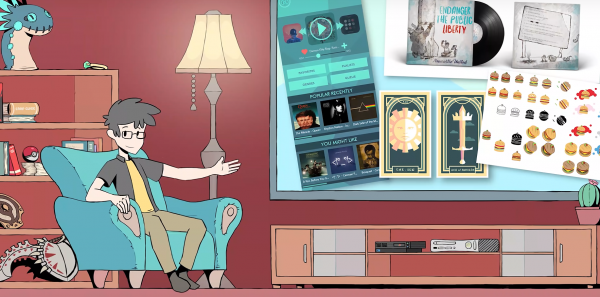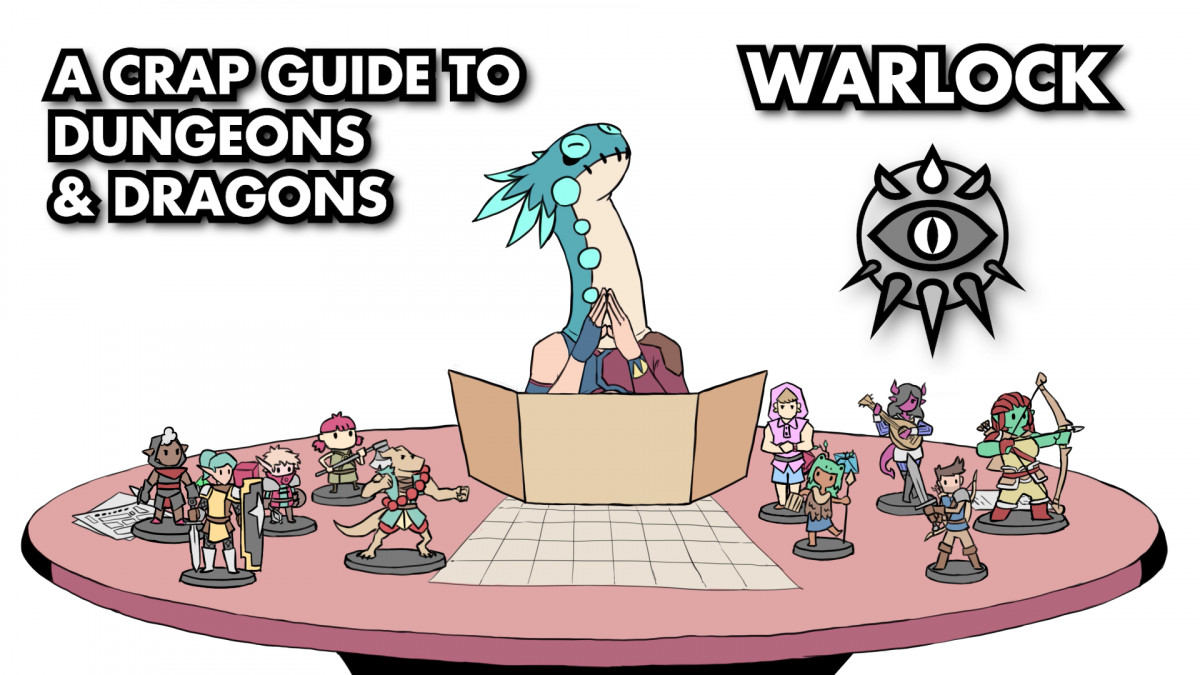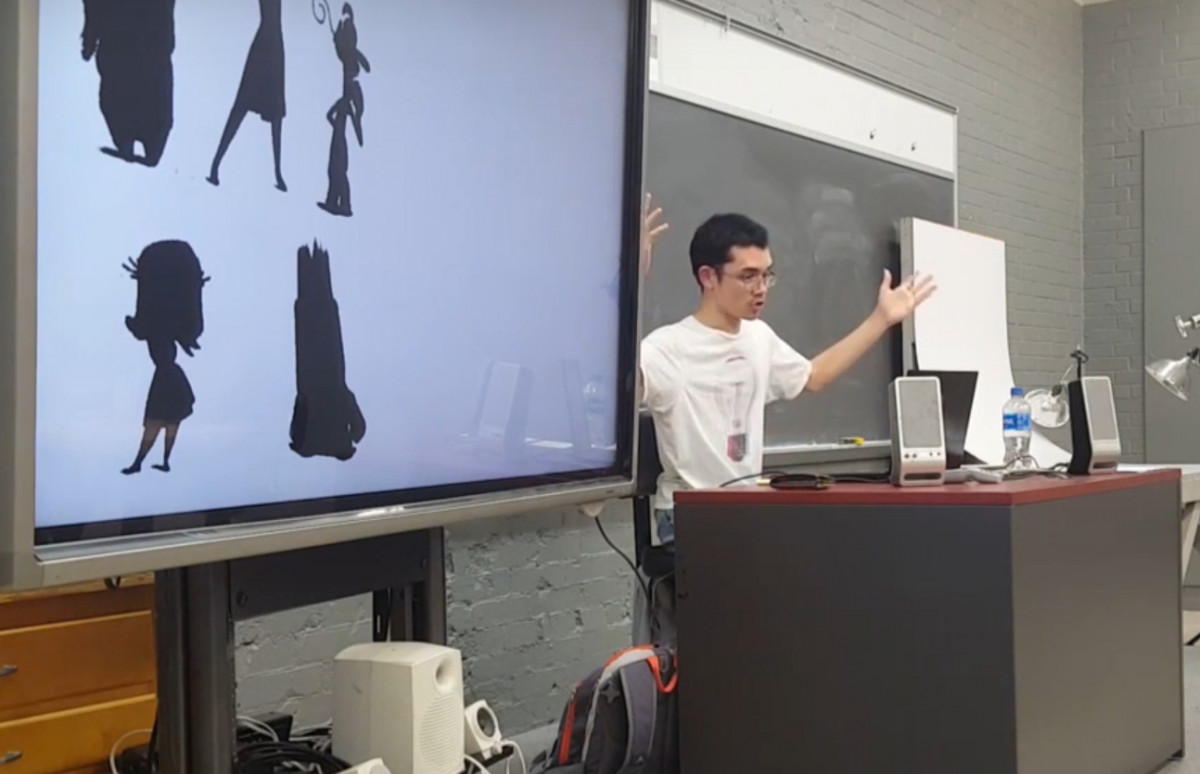The drive to create

Submitted images
This photo was captured from a video essay on Louisiana Tech graduate Joseph Catalanello’s popular YouTube channel.
Whether through video editing, graphic design, digital illustration, or even animation lectures and workshops, Louisiana Tech graphic design graduate Joseph Catalanello has always been driven to fill in gaps he notices in life by creating something new.
He’s done this in many ways, but the most notable is his popular YouTube channel, where he is known as “JoCat.”
Over the past year, Catalanello, 23, has used the video sharing platform to build a following that stands at more than 350,000 subscribers worldwide. Some videos from his popular series of satirical guides have reached almost 2 million views.
Catalanello, a Ponchatoula resident, said his creative drive is born out of a desire to see content that doesn’t yet exist.
“I just want to be able to produce things,” he said. “That comes from the fact that I’m also a consumer of media: books, movies, video games. And sometimes there’s not something out there that’s exactly what I want.
“So being a creator allows me to make that desired thing become a reality,” Catalanello said. Whatever it is that I want, if I work hard and develop my skills, I can make that thing exist.”
The “Crap Guides”

Submitted image
This is a thumbnail for one of Catalanello's well-known "Crap Guide" YouTube videos.
The “JoCat” YouTube channel is mainly known for the “Crap Guide” series, which started as comedic guides to the video game “Monster Hunter World” delivered in a semi-chaotic, rapid-fire talking style. Catalanello drew inspiration from one well-known YouTuber to craft his delivery style and drew from another to create the fictional persona that would guide viewers through the video.
“It was a mixture of those things I liked to watch while throwing in my own spin and adapting it to my own interests,” he said.
Tom Futrell, the graphic design chair in Tech’s School of Design, said he could clearly see the care Catalanello put into his work while going to Tech.
“I could tell he was passionate about storytelling and connecting with people very early on,” Futrell said. “His YouTube presence is clear evidence of that.”
These videos started helping Catalanello’s channel gain traction, and then he began expanding the series to cover topics related to the tabletop adventure game Dungeons and Dragons. He said it was another example of noticing a gap in content that was available online and deciding to fill it himself.
“It’s like, ‘Well, no one’s done a satirical guide series for D&D in the format I do, so maybe I can make that happen,” he said.
The series combines video editing and comedy writing skills and adds Catalanello’s penchant for digital art, acting out his words for the viewer with intentionally crude but lively drawings.
“There’s some kind of appeal to animation and drawings on YouTube right now — it’s a big craze,” he said. “My semi-animated series is drawn on this (digital) crumpled up piece of paper with a filter on the pen that looks like a six-year-old’s crappy crayon drawing. That’s an aesthetic I always thought was funny.”
The full series can be found here.
Other creations
In the past six months, the “Crap Guide to D&D” videos have more than doubled Catalanello’s viewership and subscriber count, enabling him to pursue other interests in front of a wider audience.
In addition to the “Crap Guide” series, the “JoCat” channel also includes things like fully animated video essays in which Catalanello’s digitized persona expounds on a topic.
He also regularly creates digital art for those who commission his services, a business that has expanded exponentially since his YouTube presence soared.
“It still felt in the moment that I wasn’t the one responsible for this stuff,” he said. “It felt like one of those things that people would share and then forget about. But no, I see my work on social media all the time, and I meet people who say, ‘Hey, I know your videos.’ It’s starting to hit me that this is real.”
The Louisiana Tech influence

Submitted photo
Louisiana Tech graphic design graduate Joseph Catalanello teaches an extracurricular class on animation principles during his time at Tech.
While Catalanello said he has engaged in video editing projects for ten years, his popular content was born while enrolled at Louisiana Tech’s School of Design, from which he graduated this spring.
He said the School of Design gave him room to explore his skillset and express his creative freedom.
“The graphic design professors were very adamant about letting us express ourselves and throw our own spin onto things,” he said. “I still remember one project where we had to make a whole ad campaign for local foods. I made a big video for it, and people responded well. That project finally pushed me over the edge to create my (YouTube) channel.”
Futrell said the open-ended nature of Catalanello’s school experience is by design.
“Our goal isn’t to make students conform to our style or philosophy. We like to see students push their passion and add value to their own education through hard work and experimentation. Joseph is a great example of that.
“I believe he grew confident in his experimentation and design process, which only yielded more interesting results.”
At one point, Catalanello led a series of after-school lectures and workshops on the foundational principles of animation for his classmates. He said this was another time, like with his videos, where he saw a gap in existing content and filled it himself.
“There wasn’t an official animation class, and it would really help out with other classes,” he said. “So I decided, ‘Hey, how about you classmates meet up with me, and I can show you a few tips and tricks to lend you a hand.’ Then one of my professors offered to make it a semi-official class and open it up to more students.”
The wide world of the internet
Not too many years ago, the idea that a series of satirical, animated guides to a video game or tabletop fantasy game could gain popularity measured in the millions would have probably seemed absurd.
But Catalanello said in today’s interconnected world, online communities with no geographic boundaries have formed specific and numerous pockets of virtual market share.
“This kind of community is a selection of people who regularly talk about and consume a certain type of content,” he said.
In a world full of these kinds of communities, creating content like Catalanello’s — which is only marketable to a niche audience — is actually more of a strength than a weakness.
“(My success) says a lot about when something is niche, it’s even more likely to gain traction,” he said. “Because if it’s niche, there’s not a lot of things to consume in that area, meaning there’s an opportunity for someone to take it up and fill that demand.”
So the message of JoCat’s popularity is: no matter what you’re interested in, opportunity is there.
“When there’s a hole that needs to be filled, it’ll probably get a better reception than most people would think,” Catalanello said. “If you supply it, and it’s of a decent enough quality, then you’ll see return.”

